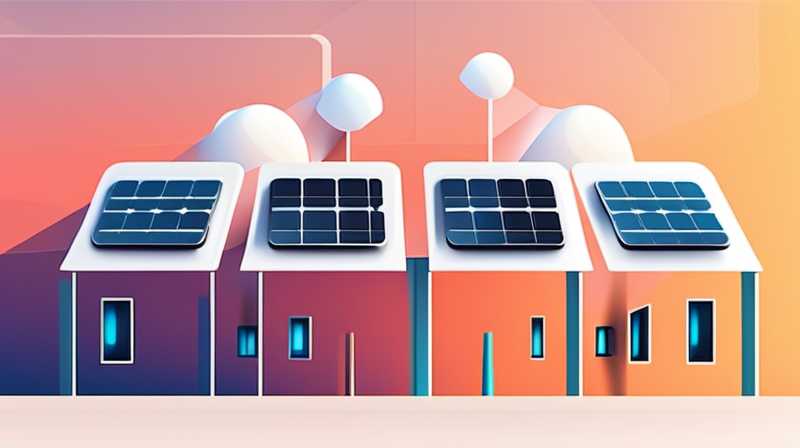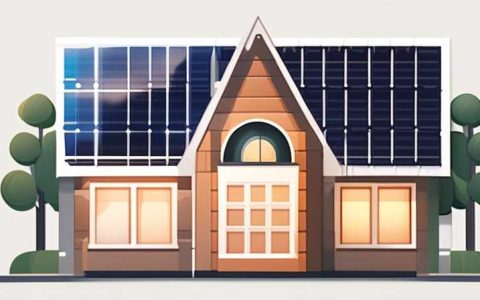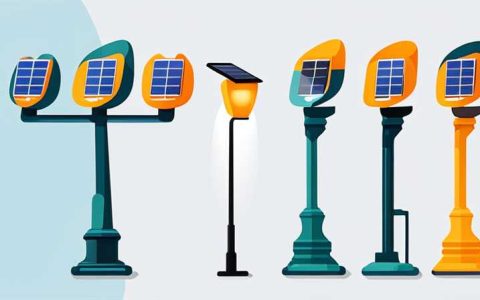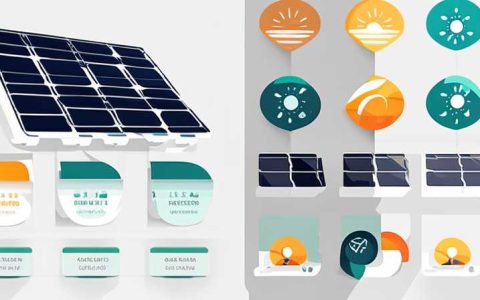
Choosing the right solar tubes involves a careful consideration of several factors that will affect both their effectiveness and their integration into your home or building. 1. Understand your specific needs, 2. Consider location orientation, 3. Assess the materials and quality of the tubes, 4. Look into installation options. Understanding your needs is paramount; a detailed analysis of the area receiving the most sunlight will dictate whether you’ll need larger or numerous tubes. For example, a roof with obstructions may require tailored solutions. The material of the tubes also directly affects performance. High-quality materials will ensure better heat retention and efficiency in energy conversion. Lastly, professional installation can lead to optimal performance and longevity of the solar tubes.
1. THE SPECIFIC NEEDS OF YOUR SPACE
Identifying the particular requirements of your space is essential when opting for solar tubes. Every household or building has a distinct profile that determines energy needs, lighting preferences, and overall efficiency goals. Evaluating how much natural light enters your space and how much more is desired can lead to informed decisions regarding the type and size of solar tubes needed. Homeowners should consider factors such as existing architecture, local climate, and personal preferences in natural lighting.
To elaborate, the orientation of your building significantly impacts how much sunlight the solar tubes will receive. For instance, homes that have south-facing roofs generally have ample exposure to sunlight throughout the day compared to those that face north. Additionally, the pitch of the roof can affect the angle at which the tubes capture sunlight. Therefore, understanding these intricacies helps homeowners select the right solar tubes that can fulfill their unique requirements, ensuring that they make a wise and effective investment.
2. LOCATION ORIENTATION AND ENVIRONMENTAL FACTORS
After establishing specific needs, the subsequent consideration pertains to the environmental factors surrounding the location where the solar tubes will be installed. Factors such as latitude, seasonal sunlight variations, and local weather conditions can drastically influence the effectiveness of solar tubes. For example, regions close to the equator receive more direct sunlight throughout the year, while areas farther away may experience prolonged winters that affect energy capture.
Moreover, obstructions such as trees, buildings, or mountains may cast shadows and limit sunlight reaching the solar tubes. Conducting a thorough analysis of the surrounding area, including potential future developments that could create new obstacles, is critical for achieving long-term performance. Therefore, when assessing location orientation, one must consider both current and possible changes in the environment to ensure optimal energy capture for the solar tubes selected.
3. MATERIALS AND QUALITY OF SOLAR TUBES
The selection of materials used in solar tubes plays a significant role in their performance, durability, and overall effectiveness. Different materials exhibit varying degrees of transparency, insulation, and durability, which can impact energy production. Typically, solar tubes are manufactured using either acrylic or glass, both of which have their distinct advantages and disadvantages.
Acrylic tubes tend to be lighter and less prone to shattering, providing more resistance under certain conditions, although they may not have the same insulation properties as glass. On the other hand, glass tubes often provide superior light transmission and thermal efficiency, thus enhancing overall performance. Therefore, evaluating performance versus durability will help decide which material is more suited to the specific climate and conditions of the installation site. Investing in quality materials leads to long-term savings and efficiency in energy production.
4. UNDERSTANDING INSTALLATION OPTIONS
Installation represents a critical phase in solar tube integration, as improper installation can severely hinder the potential benefits. Evaluating various installation methods, the complexity of the roof structure, and the benefits of professional installation versus DIY approaches can all influence final decisions. Generally, opting for professional installation is recommended, as experienced installers can assess the structure accurately and recommend the best placement for maximum sunlight absorption.
Another essential aspect of installation involves ensuring that the solar tubes connect correctly to the home’s existing ductwork or systems to facilitate optimal energy circulation. The configuration influences how effectively the captured energy can be used within the home. In situations where DIY installation is considered, homeowners should possess a solid grasp of construction skills and knowledge to avoid potential pitfalls. Ultimately, the chosen installation method should support the longevity and efficacy of the solar tubes.
5. LONG-TERM MAINTENANCE CONSIDERATIONS
Once solar tubes are installed, understanding maintenance routines becomes crucial to ensure consistent energy output and longevity. Regular cleaning and inspections contribute significantly to maintaining functionality and efficiency. Dust, debris, and environmental contaminants can accumulate on the exterior, diminishing light transmission.
Establishing a schedule for routine cleaning could involve assessing local environmental conditions that would dictate how often cleaning is necessary. Furthermore, inspecting the seals and connections can prevent air leaks and protect against moisture buildup, which, if left unaddressed, could cause long-term damage. By being proactive in maintenance, homeowners can ensure their solar tubes operate effectively, maximizing the return on investment.
FREQUENTLY ASKED QUESTIONS
WHAT ARE SOLAR TUBES AND HOW DO THEY WORK?
Solar tubes, also known as tube skylights or solar tubes, are innovative devices designed to harness natural sunlight and channel it into interiors. These cylindrical tubes capture sunlight from the roof through a transparent dome, then reflect and transmit it through highly reflective materials down into the living space. The installation of solar tubes allows natural light to illuminate rooms, reducing reliance on artificial lighting and enhancing energy efficiency.
Solar tubes can significantly improve energy management in homes and buildings, as they provide bright and even lighting without introducing heat. They are particularly beneficial in rooms with limited access to windows or areas that require additional lighting during daylight hours. By strategically placing solar tubes, occupants can enjoy an abundance of natural light, creating a more inviting and pleasant environment while contributing to energy savings.
HOW MUCH DO SOLAR TUBES COST TO INSTALL?
The financial aspects associated with solar tube installation can vary significantly based on multiple factors, including the choice of materials, size of the tubes, and complexity of installation. On average, the total cost for an installed solar tube typically ranges from $500 to $1,500 per unit. This range encompasses both material and labor costs, but potential additional expenses could arise from roof modifications or unique structural considerations.
Before committing to a purchase, it is prudent to acquire estimates from multiple contractors or suppliers to understand the prevailing market rates and options available. Homeowners might find additional incentives through local utility programs or government rebates, which can soften the financial impact by providing significant savings on installation costs. Furthermore, investing in high-quality tubes can yield longer-term benefits, such as enhanced energy efficiency and reduced electricity bills.
CAN SOLAR TUBES BE INSTALLED IN ALL TYPES OF ROOFS?
The versatility of solar tubes makes them suitable for various roofing styles, including pitched, flat, and even metal roofs. However, certain considerations must be addressed before installation to ensure the tubes function correctly and to maintain the integrity of the roof. Pitched roofs generally provide more straightforward installation options due to their inclined nature, allowing optimal sunlight capture without drastic alterations.
Conversely, flat roofs may require extra precautions, such as specialty mounts or structural adjustments, to ensure the solar tubes are securely installed. Additionally, reflective surfaces around the installation site may play a role in optimizing performance. Ultimately, while solar tubes can adapt to various roof types, the specific design, material, and local building codes should be examined to guarantee a successful installation.
In summary, selecting solar tubes entails a careful assessment of various influential elements. A comprehensive understanding of one’s specific needs, environmental factors, material quality, installation methods, and ongoing maintenance is essential for achieving optimal performance and energy efficiency. Homeowners are advised to engage with professionals, explore different styles and manufacturers, and commit to regular upkeep to maximize the benefits of their solar tube investment. Taking these actions will not only provide abundant natural light but contribute substantially to energy savings, making it a worthwhile venture for any property owner.
Original article by NenPower, If reposted, please credit the source: https://nenpower.com/blog/how-to-choose-solar-tubes-2/










